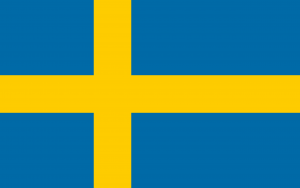Language/Swedish/Grammar/Gender-of-nouns
 Հայերէն
Հայերէն Български език
Български език 官话
官话 官話
官話 Hrvatski jezik
Hrvatski jezik Český jazyk
Český jazyk Nederlands
Nederlands English
English Suomen kieli
Suomen kieli Français
Français Deutsch
Deutsch עברית
עברית हिन्दी
हिन्दी Magyar
Magyar Bahasa Indonesia
Bahasa Indonesia فارسی
فارسی Italiano
Italiano 日本語
日本語 Қазақ тілі
Қазақ тілі 한국어
한국어 Lietuvių kalba
Lietuvių kalba Νέα Ελληνικά
Νέα Ελληνικά Şimali Azərbaycanlılar
Şimali Azərbaycanlılar Język polski
Język polski Português
Português Limba Română
Limba Română Русский язык
Русский язык Српски
Српски Español
Español العربية القياسية
العربية القياسية Wikang Tagalog
Wikang Tagalog தமிழ்
தமிழ் ภาษาไทย
ภาษาไทย Türkçe
Türkçe Українська мова
Українська мова Urdu
Urdu Tiếng Việt
Tiếng Việt
| ◀️ At the doctor's — Previous Lesson | Next Lesson — Definite and indefinite nouns ▶️ |
As a learner of Swedish, it is important to understand the gender of nouns. Unlike English, Swedish nouns have a grammatical gender (each noun is either en-word or ett-word) which affects the articles used before them, as well as the forms of certain adjectives and pronouns used with them.
As a general rule, there are two genders in Swedish: common (or masculine) gender and neuter gender. Nouns belonging to the common gender generally have the indefinite article en, while those belonging to the neuter gender have the indefinite article ett.
However, there are many exceptions to this rule, and some nouns can be either en-words or ett-words depending on the dialect or region in which they are used. In some cases, the gender of the noun is simply arbitrary and must be memorized.
Here are some general guidelines to help you understand which gender nouns belong to:
Take some time to dive into these other pages after completing this lesson: How to express our feelings & How to Talk About the Weather.
Common Gender (en-words)[edit | edit source]
Nouns that denote male humans, animals or objects are usually en-words in Swedish, for example:
| Swedish | Pronunciation | English |
|---|---|---|
| pojke | ['pɔkːɛ] | boy |
| man | [manː] | man |
| hund | [hɵnd] | dog |
| dator | [daˈtuːr] | computer |
Neuter Gender (ett-words)[edit | edit source]
Nouns that denote female humans, animals, objects, and abstract concepts are usually ett-words, for example:
| Swedish | Pronunciation | English |
|---|---|---|
| barn | [bɑːɳ] | child |
| äpple | ['ɛpːlɛ] | apple |
| vatten | ['vatːɛn] | water |
| modernat | [moˈdɛrˌnat] | modernity |
Some nouns can be either en-words or ett-words depending on different factors such as regional dialects, the noun's meaning or context it is used.
It is important to get familiar with the gender of frequently used nouns by memorizing them as you learn them, as there is no definitive way to determine the grammatical gender of all nouns in the Swedish language.
Definite Forms[edit | edit source]
In Swedish, definite nouns are formed by adding -en, -n or -et to the end of the noun depending on their gender.
For Example:
| Swedish | Indefinite Form | Definite form |
|---|---|---|
| en bok | a book | boken, the book |
| ett barn | a child | barnet, the child |
Note that, unlike in English, Swedish nouns always take a definite form when they are referred to in a specific sense, hence the need for the words "the" or "a" in English.
Plural Forms[edit | edit source]
In order to form the plural of Swedish nouns, there are several rules depending on the endings; some nouns get an "-ar" at the end, some get an "-or" and some nouns get other types of plural endings, such as "-n", "-er" or "-r".
Here are some examples:
| Swedish | Indefinite singular form | Plural form |
|---|---|---|
| en bok | a book | böcker, books |
| en pojke | a boy | pojkar, boys |
| en kvinna | a woman | kvinnor, women |
| ett äpple | an apple | äpplen, apples |
Note that some nouns don't have an "n" at the end to indicate the plural form.
As with any other aspect of Swedish grammar, mastering the gender of nouns takes practice, so keep practicing with examples until you get a hold of it. It is a fundamental concept in Swedish grammar and could make the difference between sounding proficient and like a beginner.
Don't forget to memorize the gender of nouns as you learn them, keep practicing with examples and you will soon have a good grasp of this fundamental concept in Swedish grammar.
Sources[edit | edit source]
- Swedish grammar - Wikipedia
- Swedish 'Hen' Is Here To Stay: The Success Of A Made-Up Gender ...
- Gender in Danish and Swedish - Wikipedia
- The logic behind Swedish noun gender | Swedish Language Blog
Videos[edit | edit source]
En and Ett words (Swedish genders) - YouTube[edit | edit source]
Other Lessons[edit | edit source]
- How to Get Someone's Attention
- Passive Voice
- Personal pronouns
- Past tense
- Reflexive pronouns
- Basic adjectives
- How to Use Be
- Definite Articles in Swedish
- Time References
- Past Participle in Swedish
| ◀️ At the doctor's — Previous Lesson | Next Lesson — Definite and indefinite nouns ▶️ |

